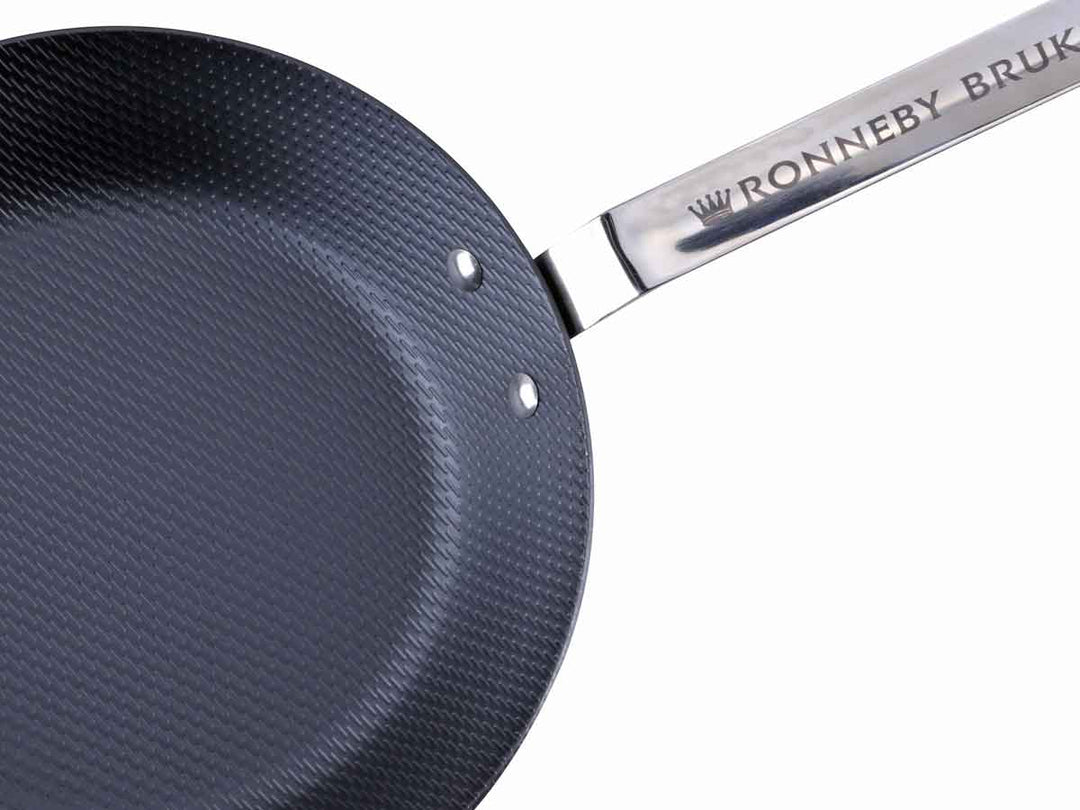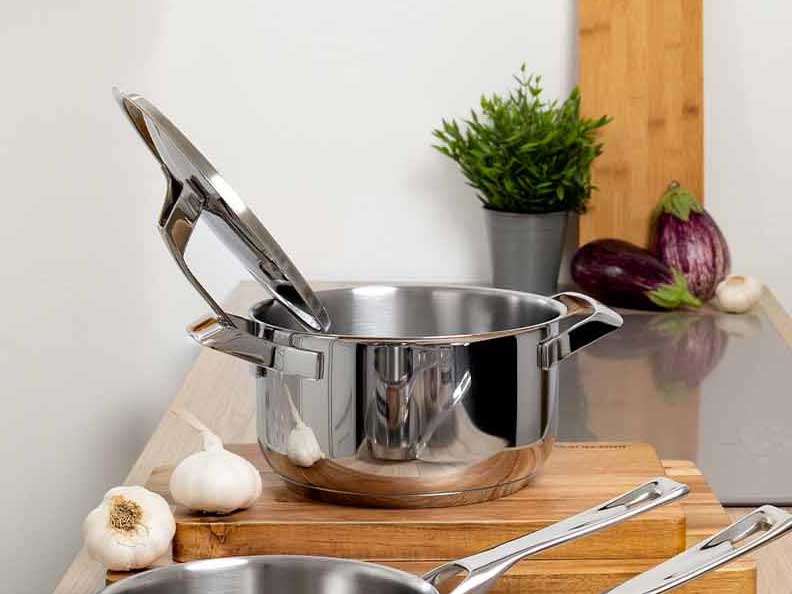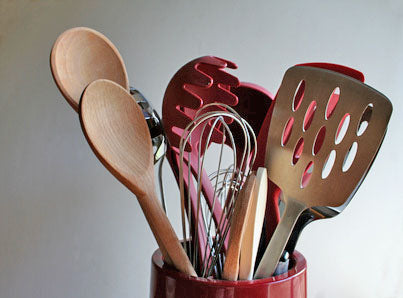seasoning layer
Some pans should be seasoned before first use to protect the frying surface and achieve better frying results.
Raw iron pans or (carbon) steel pans and raw cast iron pans must be seasoned if they have not already been seasoned in the factory.
Even if a pan that has already been seasoned has lost its seasoned layer after being cleaned too thoroughly with detergent and steel wool or has suffered from prolonged contact with certain foods, it must be seasoned again.
What is seasoning?
Seasoning in the context of cookware treatment is the intense heating of a thin layer of oil until it thickens and finally hardens (polymerization).
What does seasoning do?
On the one hand, the seasoning layer protects the iron so that it reacts less with food acids during frying or with oxygen during storage. Above all, however, the seasoning layer improves the frying behavior by reducing the tendency to stick.
Is a seasoned pan like a non-stick pan?
No! Even a very thoroughly seasoned and well-maintained pan will never be completely comparable with a real non-stick pan.
How do I season my pan?
There are different methods for burning in:
Method 1 - Seasoning in the oven (only for ovenproof cookware!)
This method is particularly suitable for raw cast iron.
-
First, rinse the pan with hot water. Then dry the pan and warm it up a bit on the stove to expel any residual moisture from the pores. Let cool down.
-
Then take a lint-free cloth and rub the inside of the pan very thinly (!) with vegetable oil. (Tip: flaxseed oil will give you a particularly hard seasoning layer.) The oil film should really only be very thin, otherwise there will be an unnecessary amount of smoke. It is better to repeat the seasoning process later than to apply too much oil!
-
Then place the pan upside down (with the frying surface facing down) on a wire rack in the oven preheated to 220°C for one hour; if necessary, place a baking tray underneath to catch any dripping oil. In the case of pans with wooden handles, remove them beforehand. CAUTION: Ventilate the kitchen well during this time! Be careful when opening the oven door!
-
Leave to cool completely. After that, the baked-on layer is finished or as good as new. If you want to be extra careful, you can repeat the process with another coat of oil.
Method 2 – Stovetop seasoning
This method works especially well for carbon steel (/iron) pans. This method is also recommended if the pan cannot be heated to the temperature required for seasoning in the oven because of the handle (pans with a fixed wooden handle, pans with a synthetic resin-coated handle). This method is also suitable for quickly regenerating an attacked seasoning layer.
-
The first thing you should do is rinse the new pan with plenty of hot water. This point does not apply if you have already subjected the used pan to an intensive cleaning after a frying mishap.
-
Then dry the pan and warm it up a little on the stove to drive off any residual moisture. Let cool down.
-
Then rub the inside of the pan thinly with ordinary vegetable oil suitable for frying and add enough oil to the pan to cover the bottom by a good 2-3 mm.
-
Heat the pan slowly (!) and under constant supervision (!) on the stove until the oil clearly starts to smoke. Reduce the heat immediately and carefully remove the pan from the stove, otherwise there is a risk of fire! To be on the safe side, have a lid ready to cover the pan!
-
Pour the hot fat into a suitable container and rub the inside of the pan with a lint-free cloth so that only a very thin film of oil remains.
-
Place the still-hot pan back on the stove and reheat until the oil film begins to smoke. Rub the thin film of oil gently. With steel pans you will see a dark discoloration of the oil film. Reduce heat. Then set the cookware aside and let cool. Finished.
Method 3 – Stovetop seasoning with potato skins
This much-cited traditional method with potato peels and salt is especially suitable for iron/carbon steel pans, but it produces a lot of harmful smoke (ventilate the kitchen well), and you easily run the risk of overheating the cookware. Therefore, we recommend this method only with reservations.
- The first thing you should do is rinse the new pan with plenty of hot water. This point is not necessary if you have already subjected the used pan to intensive cleaning after a frying mishap.
- Dry the pan thoroughly, then heat it over slightly above medium heat on a suitable hob in terms of size and add high-heat vegetable oil.
- Then add potato peelings covering the bottom and sprinkle a few tablespoons of salt.
- Continue to heat everything moderately, mixing and turning regularly, until the potato skins are evenly black and brown and the bottom of the pan has browned visibly.
- Discard potato skins and rub pan thoroughly with paper towels after cooling.





